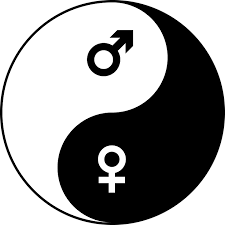This diet goes according to whether people are Ying or Yang, based on the principle that everything in nature has an opposite that complements it.
In the millenary Chinese culture, food is a very important part of traditional medicine. Although history has not yet been able to date its origin accurately, its foundations have been known for more than two thousand years. It has its own system of classification of diseases, which is based on the philosophical doctrine stating that man lives between heaven and earth, and that is in itself a miniature universe.

Traditional medicine also says that living beings are formed by a special matter, belonging to the “ying” is the feminine, passive and recessive aspect of nature, instead, the vital functions are constituents of the “yang” that is the masculine, active and of dominant appearance.
For political reasons, Chinese medicine was about to disappear between the years 1840 and 1949. However, after the founding of the People’s Republic, it developed throughout the country and even crossed borders. From then on and given its effectiveness, and along with acupuncture and Chinese diet, it began to be chosen by people around the world. Treating the principles of culture and medicine is the traditional Chinese diet. This classifies foods in different categories. The most important is that of ying and yang, which arises from the simple observation of nature and part of the belief that all natural phenomena have their opposite that complements them.
This diet is also associated with the four energies (hot, tempered, cold and fresh), the five elements (wood, earth, fire, metal and water), the five flavors (spicy, sour, bitter, sweet and salty) and the movement of chi (the vital energy that unites body, mind and spirit). All these are linked together and are essential to begin a healthy eating habit. In addition, food also seeks balance meaning people who are more ying should eat more yang foods and vice versa. Harmony and balance are keys to health.
This diet is designed for those people who are looking to eat a healthy diet and also lose weight. It is a highly recommended regimen because it contains a tasty, healthy menu and very abundant fiber, vitamins and proteins. As a first step, it is necessary to identify each type of person. The corpulent that are characterized by having a cold body, slow movements and sleep a lot belong to the ying group. On the contrary, those who have a constitution of a hot physique, are skinny and hyperactive are of the yang type. This distinction is directly related to the type of food. To be in harmony, ying people have to balance their diet by incorporating yang foods and vice versa. This is structured well because the theory is based on the principle that all natural phenomena have their own opposite that complements it.
The traditional Chinese diet classifies foods into different categories. Ying foods are considered wet, cold, soft and dark-colored including fish, seaweed, oats, barley, duck, rabbit, pork, eggplant, pumpkin, cucumber, watercress, spinach, tomato, lettuce, wheat, soybeans, banana, lemon, grapefruit, and watermelon, among others. Yang foods are warm, dry, hard and have a clear tone and tend to grow in bright places and include mussels, garlic, celery, fennel, parsley, leeks, basil, cinnamon, cilantro, cumin, soy, pepper, chicken, lamb, prawns, and chestnuts are some of them.
From this distinction, a subcategory based on the four energies: hot, temperate, cold and fresh energies emerges. Each one indicates the effect that the food has on the body. Cold and cool belong to ying and are used to treat ailments related to heat and caused by an excess of yang like the flu, as against warm and tempered foods forms, part of the yang and serve for the decompensation given by excess of ying, like feeling cold or having diarrhea. Finally, there are foods such as pasta and rice, in which none of the four energies predominates, so they can be eaten at any time.

